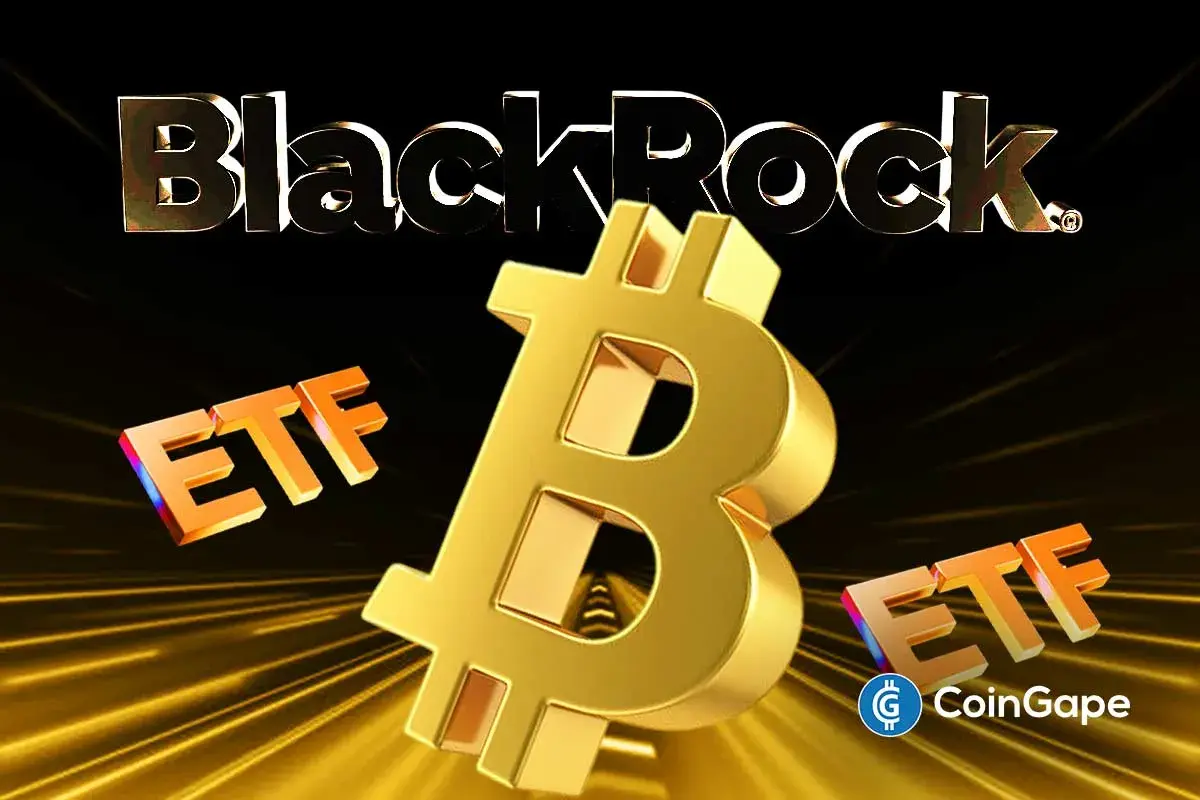Bitcoin Triumphs Gold In Investor Portfolio Allocation: JPMorgan

Highlights
- Bitcoin has outpaced gold in investor portfolio allocation.
- This milestone underscores the success of Bitcoin ETFs.
- However, the BTC price crashed significantly.
JPMorgan analysts have noted that allocation of Bitcoin (BTC) in investor portfolios has surpassed that of gold when adjusted for volatility. Specifically, Bitcoin’s allocation is 3.7 times greater than that of gold. Moreover, they pointed out a net inflow of $9 billion into Bitcoin ETFs since their inception, which offsets outflows from Grayscale.
Bitcoin Achieves Milestone Against Gold
JPMorgan’s declaration suggests a potential Bitcoin ETF market size of $62 billion if gold is used as a benchmark. Furthermore, February marked a notably optimistic period for the cryptocurrency market, with the total market capitalization soaring by nearly 40% month-over-month to $2.2 trillion. This surge was primarily driven by a 45% increase in Bitcoin and a 47% rise in Ethereum.
While altcoins didn’t perform as strongly, they still recorded double-digit gains. In addition, the decentralized finance (DeFi) and non-fungible token (NFT) sectors also saw gains during this rally. Moreover, the net sales for Spot Bitcoin ETFs surged to $6.1 billion in February, up from $1.5 billion in January.
Additionally, the crypto market Bitcoin’s value surged by 31% in a month, reaching a new all-time high at over $73,800. This rise coincided with significant inflows into Spot Bitcoin ETFs. Similarly, crypto mining stocks also reached new record highs in February.
Also Read: JPMorgan Sounds Alarm Over MicroStrategy’s $20B Bitcoin Buying Spree
BTC Price Crashes
However, after attaining the peak, the Bitcoin price experienced a substantial drop today. As of press time, BTC plummeted by 5.86% to $68,105.40 on Friday, March 15, while maintaining a market valuation of $1.33 trillion. Interestingly, the 24-hour trade volume for BTC surged by 91.58% to $85.95 billion.
The recent downturn in Bitcoin’s price is being attributed to a spike in inflation rates, notably reflected in the US Producer Price Index (PPI). In February, the PPI, which encompasses raw material costs influencing selling prices, rose by 0.6%, surpassing the expected 0.3% increase. The unexpected surge in inflation is likely to draw close attention from the Federal Reserve during their March meeting.
Moreover, a notable liquidation event is cited as another contributing factor to the decline in BTC’s price. According to CoinglassCoinglass data, a total of $270.69 million was liquidated, with $207.44 million originating from long positions within the past 24 hours. This significant liquidation adds to the downward pressure on Bitcoin’s value.
Also Read: Just-In: MicroStrategy Rushes to Buy More BTC With $525M
- Fed’s Hammack Signals No Rush to Cut Rates as January Hold Odds Near 80%
- XRP ETFs Reach $1.21B as Asset Managers See a ‘Third Path’ Beyond Bitcoin
- Nearly $50M in USDT Stolen After Address Poisoning Scam Targets Crypto Trader Wallet
- Breaking: Rep. Max Miller Unveils Crypto Tax Bill, Includes De Minimis Rules for Stablecoins
- XRP Holders Eye ‘Institutional Grade Yield’ as Ripple Engineer Details Upcoming XRPL Lending Protocol
- Will Solana Price Hit $150 as Mangocueticals Partners With Cube Group on $100M SOL Treasury?
- SUI Price Forecast After Bitwise Filed for SUI ETF With U.S. SEC – Is $3 Next?
- Bitcoin Price Alarming Pattern Points to a Dip to $80k as $2.7b Options Expires Today
- Dogecoin Price Prediction Points to $0.20 Rebound as Coinbase Launches Regulated DOGE Futures
- Pi Coin Price Prediction as Expert Warns Bitcoin May Hit $70k After BoJ Rate Hike
- Cardano Price Outlook: Will the NIGHT Token Demand Surge Trigger a Rebound?

 Claim $500
Claim $500














